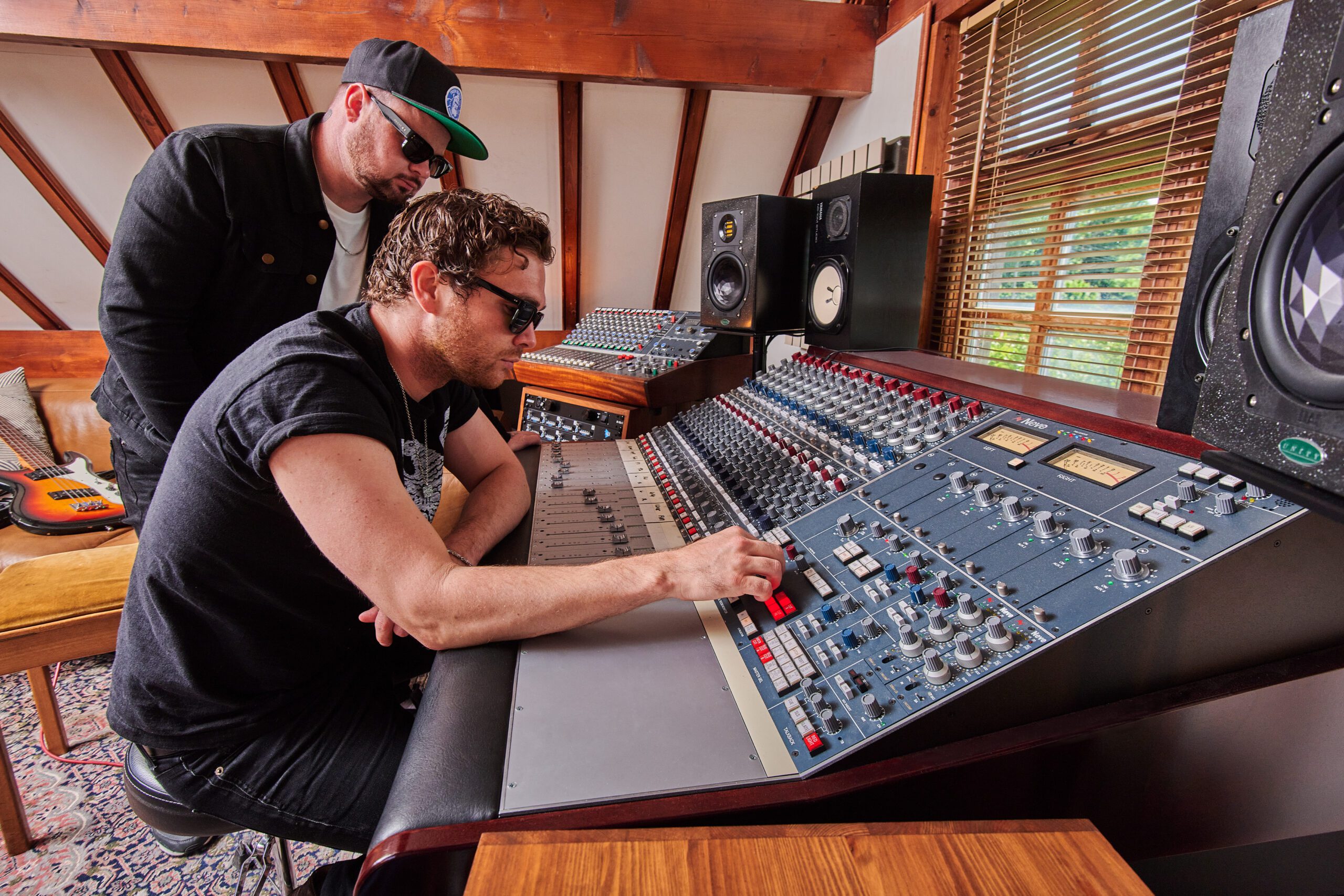We had the privilege of sitting down with Mike Kerr from the renowned rock duo Royal Blood. We delve into a range of topics, including the duo’s fascinating journey from humble beginnings to their meteoric rise to fame. Mike shared insights into how their studio has helped to shape their distinctive sound, he discusses the creative process for their album “Back to the Water Below” and talks through the addition of the 16-channel Neve BCM10/2 MK2.
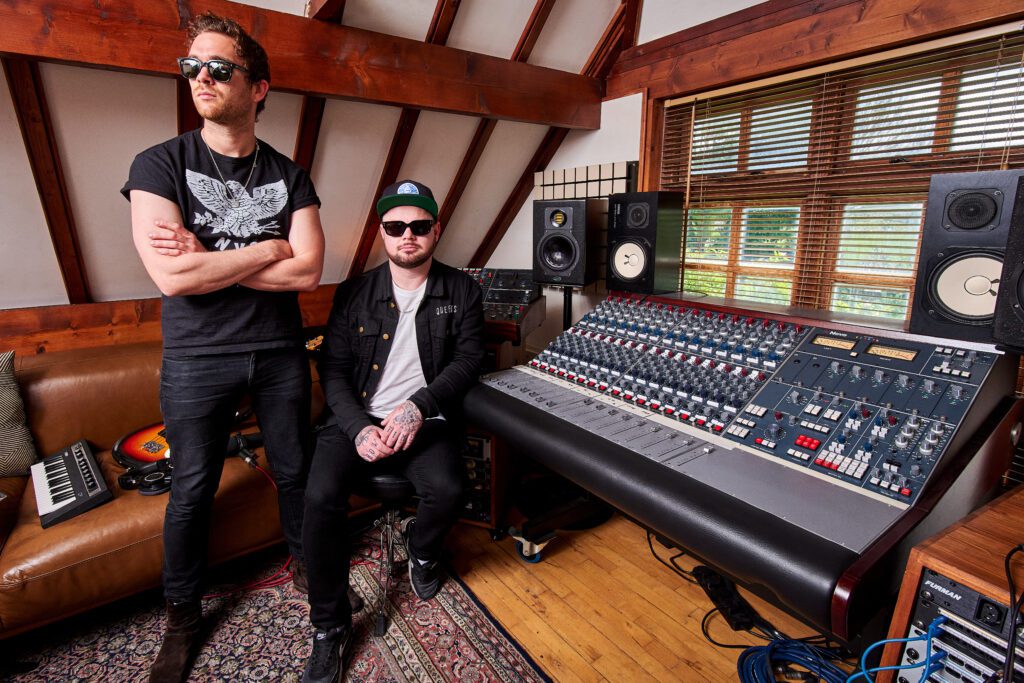
Ben and Mike in front of their BCM10/2 Mk2
Hey Mike! Please tell us how you started out as a young band in the Brighton music scene.
Ben and I are from small towns outside Brighton – Worthing and Rossington. At 15 and 16 we were playing in multiple different bands – wedding bands etc., pretty much every variation you could imagine really. We got together when we were 22, made a couple of basic recordings, and started playing on the Brighton scene. We didn’t really know how to get a gig in the traditional way, so we ended up invading a lot of open mic nights with our small amps and a simple drum kit!
Thankfully, it didn’t last long; we got picked up quite quickly by a manager who helped us get a plan together.
And the rest is history, so they say! Can you talk to us about the recording side of things? How did you find the early days in recording studios?
At the start of our journey, we didn’t go to big studios, the first half of our first album was done in a rehearsal space in the West Country, with a very simple set-up. The idea of producing a record was like, “We’ll show up, and we’ll play, and then you just record us, and you just record what we do”. So that’s what those early recordings are, they’re takes. It’s like we did two takes, and then moved on to the next song.
So then you decided to take the step up to ‘bigger’ studios?
We did the other half of the first record at Rockfield, and then I guess that felt more like a studio. Their approach was very similar, it was capturing proper performances in a natural-sounding way.
I guess that highlights the importance of high-quality audio gear?
I think it’s just about sounding honest. And I think one thing from a very naive standpoint when we started, it was like if we stood in front of the drums and we liked the way they sounded, we would want the drums on the record to sound like that.
Standing in front of my wall of amps, it was like I already had my stereo spread ready. But I didn’t know that that’s how I wanted it to come out of the monitors. So, for us, it was like we wanted something that wasn’t colouring the sound and didn’t get in the way.
Tell us more about the importance of a studio console.
Like most things in life, you don’t appreciate them until you experience them or know the details, and then you become more and more interested. From spending time in lots of studios, I started actually to tell the difference. It’s a small group of people that maybe understand it.
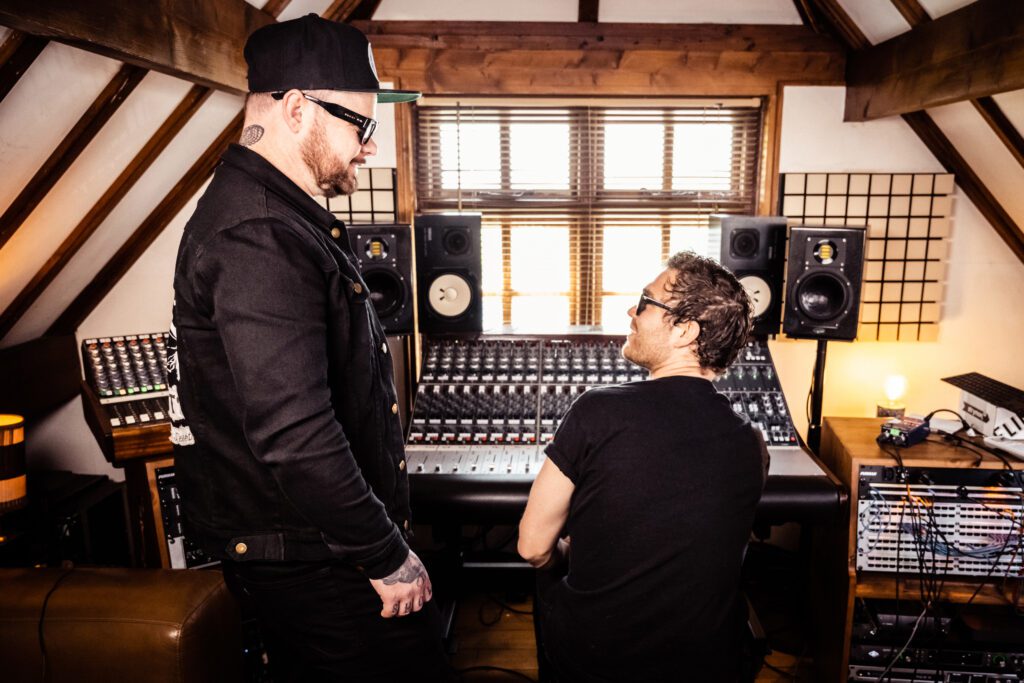
Ben and Mike in front of the BCM10/2 Mk2
What about your early experience with the Neve sound?
Going from desk to desk, the Neve thing for me, it was almost like I realised the record; there was something in my subconscious that wanted it to match what I was hearing out of the Neve, like so many things, so many Fleetwood Mac records, the kick drum, for example. Now I can hear it, whereas before, I was blind to it.
When we first got the BCM10, I pulled up the faders, and I was like, “Oh, that sounds like a record”. You know? It’s like, that sounds like a proper record; now, it doesn’t sound like a demo. It sounds like I’ve just put a vinyl on, and now it’s coming out of the speakers. I mean, there’s a sort of magic to it, you know?
We agree 😊 Do you work in the box, too? Or are you ‘pure analogue’?
I think there’s definitely a luxury to using analogue consoles. And I think if the minute you use the gear as an excuse for things not being good, then the problem’s probably on you. I think part of me still maintains I would rather have a terrible recording, but a great song because you’re not relying on the gear to make a great song.
So tell us, which album was your favourite and why?
“Back to the Water Below”. Everything was very off the cuff and spontaneous, and having something high-end, like the BCM10/2, to capture it immediately was really important. I think every time you make a record, you kind of reflect on how you do it differently, what you would do differently and what you would keep the same. So, I like to think that every time you make one, the experience is better. We just felt a mixture of real musical freedom mixed with confidence that if a song or idea was taken a certain way, we now had the skills to execute it properly. So, this one, we didn’t, we didn’t feel held back in any way.
Tell us more about the addition of the BCM10/2 Mk2.
We had used an original BCM in the past, and I think that did influence our decision to buy one. Also, the actual studio we’re currently in didn’t have a desk. There were lots of preamps, but there was no heart to the studio. So, we knew once we decided to commit to being here [at their studio], we knew that investing in the desk was what we needed to do.
Pete Hutchens is our Engineer, and he was kind of egging me on to buy a BCM10/2 Mk2 – he was a bad influence, haha. I think before we knew it, we had the whole thing on like a forklift coming into the studio.
It was quite a terrifying moment where the BCM was about 15 feet in the air, and I was just like, f*cking hell. So yeah, it just kind of escalated, really.
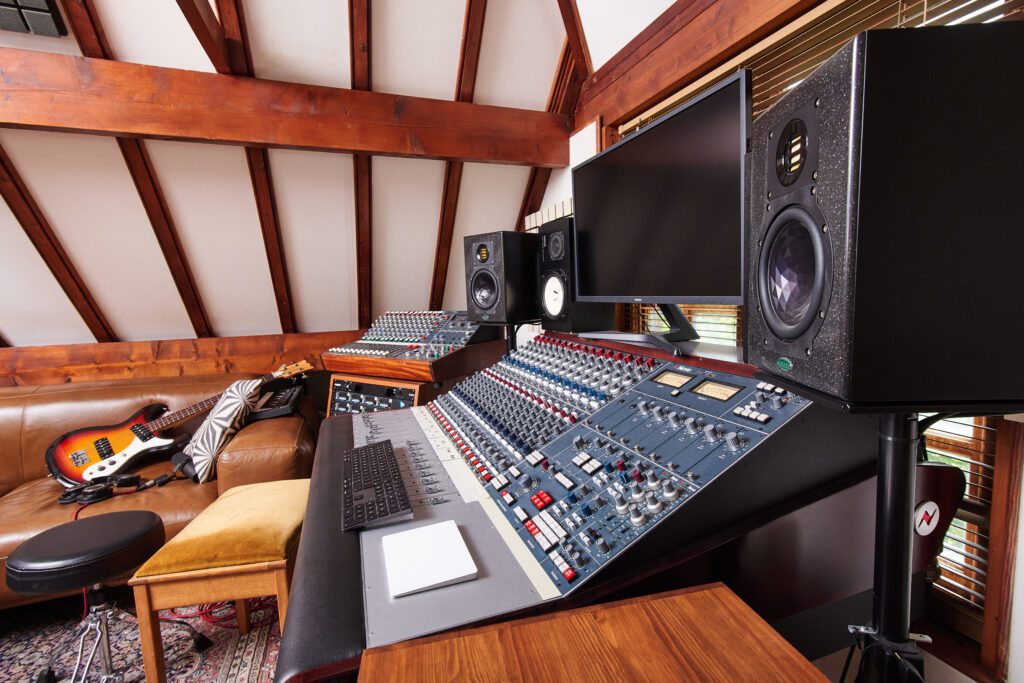
The BCM10/2 MK2 in situ
We can imagine it was terrifying! What other key pieces of gear are connected to the console?
We have a PSM here with some cool history – I think it might have been owned by ‘The Carpenters’ originally, and I think Noel Gallagher bought it and modded it, so it had separate ins and outs. We’ve integrated that into the BCM10’s simple inputs to continue the “Neve thing”. The PSM has some cool sounds to it, it’s really crunchy on drums, and we utilise all of the simple inputs for flexibility from session to session.
As there are only two of us, we can set up a whole session and get everything dialled in, and we can mix what was going on before we even started tracking. So yeah, it’s really, really cool and perfect for us.
How do you approach the creative process for your music?
We use the console when we’re writing, which can easily become a demo and then the demo can even become the final recording. And for someone who had minimal experience working with desks, I just found the whole thing so unintimidating. I realised I had this skill set already because to me, the whole thing is a giant pedalboard.
The Neve made recording, writing, and dubbing much more fun because I realised I wasn’t looking at the computer. I was kind of dialling in all my sounds using my hands, which is what I’m used to doing. So, it was really fun, and knowing that what I’m hearing on my amps and what makes the recording was complete.
I knew that by the time I hit record, I was like, that’s it, it’s done. There’s no other process other than mixing that will change it. So yeah, I found the whole thing really, really fun. And yeah, we’re really good now.
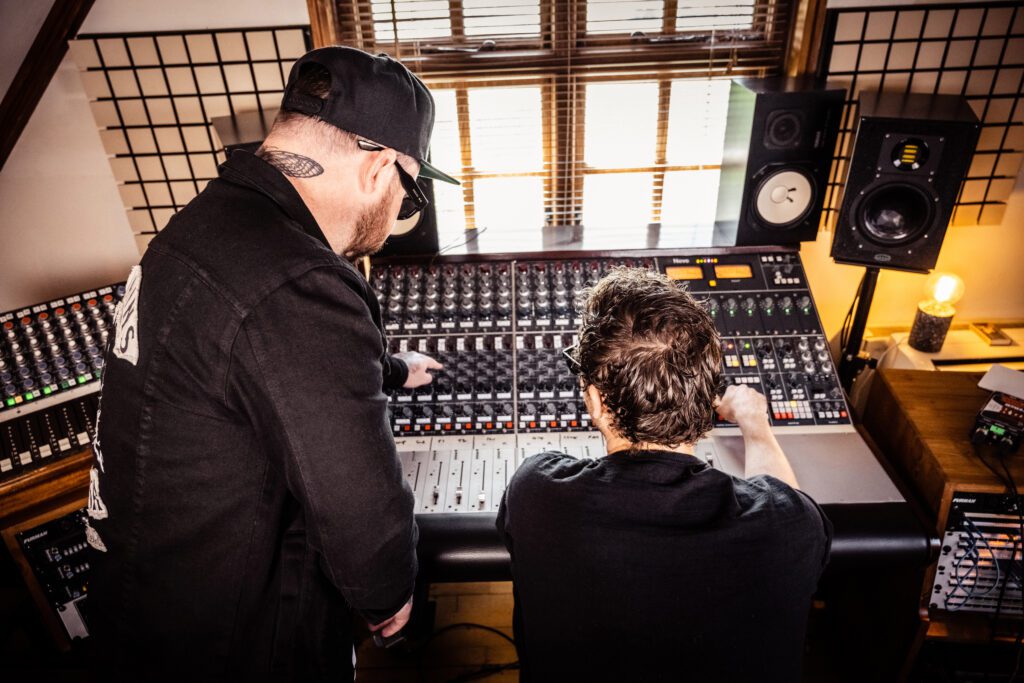
Mike and Ben with their Neve BCM10/2 MK2
So now you’ve experienced the BCM10/2, what are the features you couldn’t live without?
I think it’s the simple inputs because it allows room for it not to be one thing and change.
It’s something that I know will keep it adaptable. If we move space or whatever else comes in, it doesn’t mean the desk has to change; it means we can keep it the same. So, I think that’s given it a longevity.
And, of course, it looks fantastic, doesn’t it? 😉
There’s something very Apollo-like about taking pictures of the desk. It looks like the sort of moon landing mission; I feel like I’m in the Apollo mission. I’d be lying if I said I wasn’t swayed by how it looks.
Finally, how would you describe the sound of the BCM10/2?
Whatever it’s doing is making it sound better and fooling me into feeling like I know what I’m doing! It just feels like the sort of sweet spot at the minute for us.
That’s a wrap! Thank you, Mike. We hope you enjoyed the inside scoop on the Royal Blood journey, studio secrets, and that awesome BCM10/2 Mk2 purchase!
